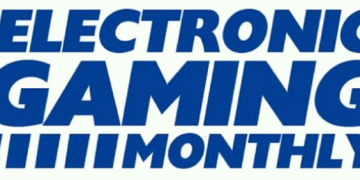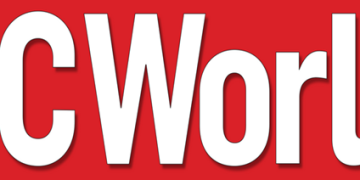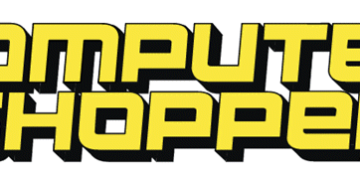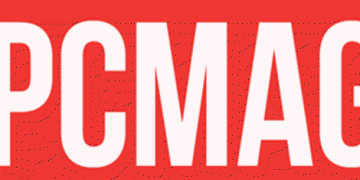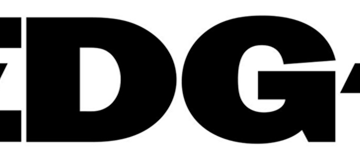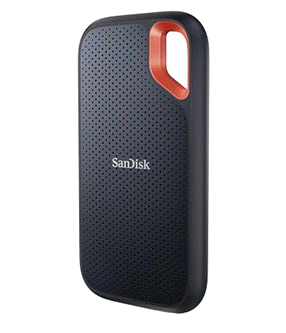CISO Advisory
2025-08-17 14:12:00
gbhackers.com
In the relentless battle against cyber threats in 2025, unpatched software remains a gaping vulnerability exploited by attackers worldwide.
Outdated operating systems, applications riddled with known flaws, and missing security updates create an open invitation for malware, ransomware, and data breaches.
Effective patch management the process of identifying, acquiring, testing, and deploying software updates to fix these vulnerabilities – is no longer a routine IT task; it’s a critical cornerstone of any robust cybersecurity strategy.
Neglecting timely patching leaves organizations exposed to significant risks, including financial losses, reputational damage, regulatory fines, and business disruptions.
As the threat landscape continues to evolve with increasingly sophisticated attacks, relying on manual patching processes is simply unsustainable.
Organizations need robust, automated patch management solutions that can efficiently and reliably keep all their systems—from endpoints and servers to third-party applications—up to date with the latest security fixes. For example, Microsoft Patch Tuesday regularly delivers critical updates addressing newly discovered vulnerabilities.
This article delves into the Top 10 Best Patch Management software for IT Security in 2025, providing an in-depth analysis of their capabilities to help you choose the right solution to shield your digital assets in an increasingly vulnerable world.
The Indispensable Nature Of Patch Management In 2025
The critical importance of effective patch management in 2025 stems from several key trends and challenges:
Proliferation of Vulnerabilities: As software complexity continues to rise, a constant stream of newly discovered vulnerabilities emerges. Attackers are quick to weaponize these flaws, making timely patching essential to close potential entry points.
Rise of Remote Workforces: Managing patch compliance across a distributed network of remote devices presents significant challenges. Centralized patch management solutions are crucial for ensuring all endpoints, regardless of location, are adequately protected.
Increased Sophistication of Attacks: Modern cyberattacks, including ransomware and nation-state threats, often exploit known vulnerabilities in unpatched systems to gain initial access and propagate across networks.
Growing Regulatory Compliance: Various regulations, such as GDPR, HIPAA, and PCI DSS, mandate that organizations maintain secure systems, which includes timely patching. Failure to comply can result in significant penalties.
Complexity of IT Environments: Organizations often manage a diverse ecosystem of operating systems, applications, and third-party software. A centralized patch management solution simplifies this complexity and ensures consistent patching across all assets.
Time Sensitivity of Vulnerabilities: The window of opportunity for attackers to exploit newly disclosed vulnerabilities is often very short. Automated patch management accelerates the patching process, reducing this exposure window.
Impact of Zero-Day Exploits: While patch management primarily addresses known vulnerabilities, a robust system can also help mitigate the impact of zero-day exploits by ensuring systems are running the latest versions with other security controls in place.
In this dynamic threat landscape, investing in a best-in-class patch management solution is a fundamental step in building a resilient and secure IT infrastructure.
Comparison Table: Top 10 Best Patch Management software For IT Security 2025
| Vendor / Platform | OS Patching | Third-Party App Patching | Centralized Management | Automated Patching | Risk-Based Prioritization | Patch Compliance Reporting | Remote Endpoint Management |
| NinjaOne | ✅ Yes | ✅ Yes | ✅ Yes | ✅ Yes | ✅ Yes | ✅ Yes | ✅ Yes |
| Action1 | ✅ Yes | ✅ Yes | ✅ Yes | ✅ Yes | ✅ Yes | ✅ Yes | ✅ Yes |
| Ivanti | ✅ Yes | ✅ Yes | ✅ Yes | ✅ Yes | ✅ Yes | ✅ Yes | ✅ Yes |
| ManageEngine | ✅ Yes | ✅ Yes | ✅ Yes | ✅ Yes | ✅ Yes | ✅ Yes | ✅ Yes |
| Microsoft Intune | ✅ Yes | ✅ Limited | ✅ Yes | ✅ Yes | ✅ Limited | ✅ Yes | ✅ Yes |
| SolarWinds | ✅ Yes | ✅ Yes | ✅ Yes | ✅ Yes | ✅ Limited | ✅ Yes | ✅ Yes |
| Tanium | ✅ Yes | ✅ Yes | ✅ Yes | ✅ Yes | ✅ Yes | ✅ Yes | ✅ Yes |
| Automox | ✅ Yes | ✅ Yes | ✅ Yes | ✅ Yes | ✅ Yes | ✅ Yes | ✅ Yes |
| Qualys | ✅ Yes | ✅ Yes | ✅ Yes | ✅ Yes | ✅ Yes | ✅ Yes | ✅ Yes |
| Heimdal | ✅ Yes | ✅ Yes | ✅ Yes | ✅ Yes | ✅ Yes | ✅ Yes | ✅ Yes |
Let’s Break Down Patch Management Software in 2025
1. NinjaOne

Why We Picked It:
NinjaOne stands out for its intuitive user interface and its seamless integration of patch management within a broader IT management platform.
Its ease of use doesn’t compromise its power, offering granular control over patching schedules and policies for both operating systems and a vast library of third-party applications.
This unified approach simplifies IT workflows and provides excellent visibility into patch compliance across all managed endpoints, making it a top choice for MSPs and IT departments seeking efficiency and effectiveness.
Specifications:
NinjaOne supports patching for Windows, macOS, and Linux operating systems, along with a vast library of third-party applications.
It offers automated patch deployment, customizable patching schedules, patch approval workflows, rollback capabilities, and comprehensive reporting on patch compliance.
It also includes remote monitoring and management (RMM) features.
Reason to Buy:
If you’re looking for a patch management solution that is both powerful and easy to use, integrated within a comprehensive IT management platform, NinjaOne is an excellent choice.
Its intuitive interface simplifies the complexities of patch management, while its robust features ensure that your systems are up-to-date and secure.
The platform’s unified approach streamlines IT operations, making it ideal for organizations of all sizes, particularly those who value efficiency and ease of management alongside strong security.
Features:
- Automated patching for operating systems (Windows, macOS, Linux).
- Extensive third-party application patching support.
- Customizable patching schedules and policies.
- Patch approval workflows and rollback capabilities.
- Comprehensive patch compliance reporting.
- Integrated remote monitoring and management (RMM) features.
- Intuitive and user-friendly interface.
Pros:
- Excellent ease of use and intuitive interface.
- Robust support for third-party application patching.
- Seamless integration with broader IT management features.
- Granular control over patching policies.
- Strong reporting and visibility.
Cons:
- May not offer the deepest level of customization for highly specific enterprise needs.
- Pricing is based on per-device, which can become costly for very large organizations.
✅ Best For: Managed Service Providers (MSPs) and IT departments of all sizes that need a user-friendly, powerful, and integrated patch management solution within a broader IT management platform.
🔗 Try NinjaOne here → NinjaOne Official Website2. Action1
.webp)
Why We Picked It:
Action1 distinguishes itself with its focus on speed, efficiency, and real-time visibility in patch management.
Its cloud-native architecture enables rapid deployment and provides immediate insights into the patch status of all endpoints, regardless of their location.
This real-time visibility, coupled with powerful automation capabilities, allows organizations to quickly identify and remediate vulnerabilities, making it an ideal solution for businesses prioritizing agility and responsiveness in their security posture.
Specifications:
Action1 supports patching for Windows and macOS operating systems, along with a wide range of third-party applications.
It offers real-time patch status monitoring, automated patch deployment, customizable patching policies, remote command execution, and comprehensive reporting.
Its cloud-native architecture ensures scalability and ease of management.
Reason to Buy:
If you need a patch management solution that provides instant visibility into your endpoint patch status and enables rapid, efficient deployment of updates, Action1 is a compelling choice.
Its cloud-native design and focus on speed make it particularly well-suited for organizations with distributed workforces or those that need to quickly address critical vulnerabilities.
The platform’s real-time monitoring and powerful automation features streamline the patching process, reducing the time and effort required to maintain a secure and compliant environment.
Features:
- Real-time patch status monitoring across all endpoints.
- Automated patching for Windows and macOS.
- Extensive third-party application patching support.
- Customizable patching policies and schedules.
- Remote command execution for immediate remediation.
- Comprehensive patch compliance reporting.
- Cloud-native architecture for scalability and ease of use.
Pros:
- Excellent real-time visibility into patch status.
- Fast and efficient patch deployment.
- Cloud-native architecture offers scalability and ease of management.
- Strong automation capabilities.
- Effective for managing remote endpoints.
Cons:
- Primarily focused on Windows and macOS.
- The interface, while functional, might not be as visually polished as some competitors.
✅ Best For: Organizations that prioritize speed, efficiency, and real-time visibility in their patch management processes, particularly those with distributed workforces.
🔗 Try Action1 here → Action1 Official Website3. Ivanti
.webp)
Why We Picked It:
Ivanti Neurons for Patch Management stands out for its intelligent automation and AI-driven risk prioritization.
By leveraging AI, the platform can analyze vulnerabilities, assess their real-world risk based on exploitability and threat intelligence, and automatically prioritize the deployment of the most critical patches.
This intelligent automation reduces the manual effort involved in patch management and ensures that security teams focus on the vulnerabilities that pose the greatest threat to the organization, improving overall efficiency and effectiveness.
Specifications:
Ivanti Neurons supports patching for Windows, macOS, and Linux operating systems, along with a broad range of third-party applications.
It offers AI-powered risk prioritization, automated patch deployment, patch compliance dashboards, and integration with Ivanti’s broader IT management and security solutions.
Reason to Buy:
If you’re looking to introduce intelligence and automation into your patch management processes, Ivanti Neurons is a strong contender.
Its AI-driven risk prioritization helps you focus on the most critical vulnerabilities, reducing your exposure window effectively.
The platform’s automation capabilities streamline the entire patching lifecycle, from identification to deployment, saving time and resources while improving your overall security posture.
Its integration with the broader Ivanti ecosystem provides a unified approach to IT management and security.
Features:
- AI-powered risk-based patch prioritization.
- Automated patch deployment for operating systems and third-party apps.
- Support for Windows, macOS, and Linux.
- Comprehensive patch compliance dashboards and reporting.
- Integration with Ivanti’s broader IT management and security solutions.
- Automated workflows for patch testing and rollback.
Pros:
- Intelligent, AI-driven risk prioritization.
- Strong automation capabilities across the patching lifecycle.
- Comprehensive support for various operating systems and applications.
- Integration with a broader IT management suite.
- Improved efficiency and reduced manual effort.
Cons:
- The AI-driven prioritization might require some tuning and configuration for optimal results.
- Pricing can be complex depending on the modules and scale.
✅ Best For: Organizations seeking to leverage AI-powered risk prioritization and intelligent automation to streamline their patch management processes and focus on the most critical vulnerabilities.
🔗 Try Ivanti Neurons for Patch Management here → Ivanti Official Website4. ManageEngine
.webp)
Why We Picked It:
ManageEngine Patch Manager Plus is chosen for its comprehensive feature set and its cost-effectiveness.
It provides robust patch management capabilities for a wide range of operating systems and a vast library of third-party applications, all within a centralized and easy-to-manage platform.
Its integration with vulnerability scanning and detailed compliance reporting makes it a versatile and value-driven solution for organizations looking for a feature-rich patch management tool without a premium price tag.
Specifications:
Patch Manager Plus supports patching for Windows, macOS, and Linux, and over 1000 third-party applications.
It offers automated patch deployment, vulnerability scanning integration, flexible deployment options (on-premise and cloud), detailed patch compliance reporting, and customizable patching policies.
Reason to Buy:
If you’re looking for a feature-rich patch management solution that offers broad platform support and comprehensive capabilities at a competitive price point, ManageEngine Patch Manager Plus is an excellent option.
Its centralized control, automation features, and integration with vulnerability scanning provide a robust framework for keeping your systems secure and compliant.
The platform’s flexibility in deployment (on-premise or cloud) makes it suitable for various IT environments, and its detailed reporting provides the necessary visibility into your patch management efforts.
Features:
- Centralized patch management for Windows, macOS, and Linux.
- Support for patching over 1000 third-party applications.
- Automated patch deployment with customizable policies.
- Integrated vulnerability scanning.
- Flexible deployment options (on-premise and cloud).
- Detailed patch compliance reporting.
- Support for patch testing and rollback.
Pros:
- Comprehensive feature set at a competitive price.
- Broad support for operating systems and third-party applications.
- Flexible deployment options.
- Integrated vulnerability scanning.
- Strong reporting capabilities.
Cons:
- The user interface might feel slightly less modern compared to some cloud-native solutions.
- Some advanced features might require a higher-tier license.
✅ Best For: Organizations of all sizes seeking a comprehensive, feature-rich, and cost-effective patch management solution with broad platform support.
🔗 Try ManageEngine Patch Manager Plus here → ManageEngine Official Website5. Microsoft Intune
.webp)
Why We Picked It:
Microsoft Intune is a natural pick for organizations deeply embedded in the Microsoft ecosystem, as it offers seamless integration with Windows, Microsoft 365, and Azure Active Directory for managing updates and patches across a variety of devices, including Windows, macOS, iOS, and Android.
Its centralized management within the Microsoft Endpoint Manager provides a familiar and consistent administrative experience for IT teams already using Microsoft’s suite of tools.
Specifications:
Intune supports patch management for Windows, macOS, iOS, and Android operating systems, along with updates for Microsoft 365 applications and limited third-party application patching.
It offers centralized management through the Microsoft Endpoint Manager admin center, automated update deployment, compliance policies, and reporting.
Reason to Buy:
If your organization primarily uses Microsoft operating systems and applications and you’re already managing your endpoints with Microsoft Endpoint Manager (including Intune), then leveraging Intune for patch management offers significant advantages in terms of integration and ease of use.
It provides a centralized platform for managing updates across all your managed devices, ensuring compliance and streamlining administrative tasks within a familiar Microsoft environment.
Features:
- Patch management for Windows, macOS, iOS, and Android.
- Centralized management through Microsoft Endpoint Manager.
- Automated update deployment for Microsoft products.
- Limited third-party application patching support.
- Compliance policies and reporting.
- Integration with Azure Active Directory for device management.
Pros:
- Seamless integration with the Microsoft ecosystem.
- Centralized management within a familiar interface.
- Supports a wide range of device platforms.
- Included with many Microsoft 365 subscriptions.
- Strong for managing updates to Windows and Microsoft applications.
Cons:
- Limited support for patching third-party applications compared to dedicated patch management solutions.
- Risk-based prioritization features are less advanced.
- Reporting might lack the depth and customization of specialized tools.
✅ Best For: Organizations heavily invested in the Microsoft ecosystem that need a seamlessly integrated solution for managing updates and patches across Windows, macOS, iOS, and Android devices.
🔗 Try Microsoft Intune here → Microsoft Official Website6. SolarWinds
.webp)
Why We Picked It:
SolarWinds Patch Manager is chosen for its ability to enhance the native patch management capabilities of Microsoft WSUS and SCCM by seamlessly integrating third-party application patching.
For organizations that have already invested in and are familiar with Microsoft’s patching infrastructure, SolarWinds Patch Manager provides a valuable extension, simplifying the often-complex process of keeping non-Microsoft software up-to-date and secure through a centralized and familiar console.
Specifications:
SolarWinds Patch Manager integrates with Microsoft WSUS and SCCM to provide third-party application patching support.
It offers pre-built patch packages, automated deployment options, customizable schedules, and compliance reporting. It supports a wide range of popular third-party applications.
Reason to Buy:
If your organization is already using Microsoft WSUS or SCCM for operating system patching and you’re looking for a straightforward way to extend that functionality to include third-party applications, SolarWinds Patch Manager is a strong contender.
It simplifies the often-cumbersome process of finding, packaging, and deploying updates for non-Microsoft software, allowing you to manage all your patching needs from a centralized console and leverage your existing Microsoft infrastructure investments.
Features:
- Extends Microsoft WSUS and SCCM for third-party patching.
- Pre-built patch packages for popular applications.
- Automated patch deployment and scheduling.
- Customizable patching policies.
- Compliance reporting.
- Simplified management of third-party updates.
Pros:
- Leverages existing Microsoft patching infrastructure.
- Simplifies third-party application patching.
- Pre-built packages save time and effort.
- Centralized management through WSUS or SCCM consoles.
- Cost-effective for extending existing Microsoft investments.
Cons:
- Requires existing WSUS or SCCM infrastructure.
- May not offer the same level of advanced features as standalone patch management solutions.
- Risk-based prioritization features are limited.
✅ Best For: Organizations already utilizing Microsoft WSUS or SCCM that need a simple and effective way to extend their patching capabilities to include third-party applications.
🔗 Try SolarWinds Patch Manager here → SolarWinds Official Website7. Tanium
.webp)
Why We Picked It:
Tanium is distinguished by its exceptional speed and scalability in providing real-time visibility and control over a massive number of endpoints.
Its patch management module is designed for organizations with very large and complex IT environments, offering rapid identification of missing patches and highly efficient deployment across distributed systems.
If you need to patch thousands or even hundreds of thousands of endpoints quickly and reliably, Tanium’s architecture is built for that challenge.
Specifications:
Tanium offers rapid patch identification and deployment for Windows, macOS, and Linux, along with extensive third-party application support.
It provides real-time visibility into patch status, granular control over deployment, and robust reporting capabilities, all built on its unique peer-to-peer architecture for speed and scale.
Reason to Buy:
If your organization manages a very large and geographically dispersed IT environment and requires a patch management software that can operate at speed and scale without overwhelming network resources, Tanium is a powerful contender.
Its real-time visibility and efficient deployment mechanisms ensure that you can quickly identify and remediate vulnerabilities across all your endpoints, maintaining a strong security posture even in the most complex environments.
Features:
- Extremely fast and scalable patch identification and deployment.
- Real-time visibility into patch status across a large number of endpoints.
- Support for Windows, macOS, and Linux patching.
- Extensive third-party application patching.
- Granular control over patch deployment.
- Robust reporting and compliance tracking.
- Unique peer-to-peer architecture for efficient operations at scale.
Pros:
- Unparalleled speed and scalability for large environments.
- Real-time visibility into endpoint status.
- Highly efficient architecture minimizes network impact.
- Granular control over patching processes.
- Comprehensive platform for endpoint management and security.
Cons:
- Can be a complex platform to implement and manage.
- Requires specialized expertise for optimal configuration.
- Pricing model can be complex and potentially high for very large deployments.
✅ Best For: Very large enterprises with complex and distributed IT environments that require extremely fast and scalable patch management capabilities across a massive number of endpoints.
🔗 Try Tanium here → Tanium Official Website8. Automox
.webp)
Why We Picked It:
Automox stands out as a fully cloud-native patch management and endpoint hardening platform that prioritizes ease of use and automation.
Its ability to manage patching for Windows, macOS, and Linux across any location, coupled with its comprehensive automation of the entire patching lifecycle, significantly reduces the manual effort and complexity associated with keeping systems secure and compliant.
If you’re looking for a modern, streamlined, and highly automated patch management solution that can handle a distributed workforce, Automox is a strong choice.
Specifications:
Automox provides fully automated patching for Windows, macOS, and Linux operating systems and third-party applications.
It offers centralized management through a cloud-based console, customizable patching policies, automated enforcement of security configurations, and comprehensive reporting.
Reason to Buy:
If you’re seeking a modern, cloud-first approach to patch management that emphasizes automation and ease of use, Automox is an excellent solution.
Its ability to manage patching across diverse operating systems and distributed environments with minimal manual intervention frees up IT resources and ensures consistent security patching.
The platform’s focus on endpoint hardening provides an additional layer of security beyond just patching.
Features:
- Fully automated patching for Windows, macOS, and Linux.
- Comprehensive third-party application patching.
- Cloud-native architecture for easy deployment and management.
- Centralized management console accessible from anywhere.
- Customizable and automated patching policies.
- Automated enforcement of security configurations.
- Comprehensive reporting and compliance tracking.
Pros:
- Highly automated patching processes.
- Easy to deploy and manage due to its cloud-native design.
- Supports a wide range of operating systems and applications.
- Effective for managing distributed and remote endpoints.
- Streamlines patch management workflows.
Cons:
- Relies entirely on a cloud connection for management.
- Advanced customization options might be less granular than some on-premise solutions.
✅ Best For: Organizations that prioritize ease of use and a fully automated, cloud-native approach to patch management across distributed Windows, macOS, and Linux endpoints.
🔗 Try Automox here → Automox Official Website9. Qualys
.webp)
Why We Picked It:
Qualys Patch Management is chosen for its tight integration with the Qualys VMDR platform, creating a unified workflow for identifying vulnerabilities and deploying the necessary patches to remediate them.
By leveraging the comprehensive vulnerability data collected by Qualys, organizations can quickly and accurately target missing patches, streamlining the remediation process and reducing their exposure window with a cohesive and efficient approach.
Specifications:
Qualys Patch Management integrates with Qualys VMDR to identify and deploy missing patches for operating systems and third-party applications.
It offers automated patch deployment, customizable schedules, rollback capabilities, and comprehensive reporting on patch status and vulnerability remediation.
Reason to Buy:
If your organization is already using or considering Qualys VMDR for vulnerability management, then Qualys Patch Management offers a natural and powerful extension to your security operations.
The seamless integration between vulnerability detection and patch deployment streamlines the remediation lifecycle, allowing you to quickly address identified weaknesses and improve your overall security posture within a unified cloud platform.
Features:
- Tightly integrated with Qualys VMDR for vulnerability-driven patching.
- Automated patch deployment for operating systems and third-party apps.
- Customizable patching schedules and policies.
- Patch rollback capabilities.
- Comprehensive reporting on patch status and vulnerability remediation.
- Cloud-based platform for easy deployment and management.
Pros:
- Seamless integration with Qualys VMDR.
- Vulnerability-driven patch deployment for targeted remediation.
- Cloud-based architecture offers ease of use and scalability.
- Automated patching workflows.
- Comprehensive reporting on remediation efforts.
Cons:
- Requires investment in the Qualys ecosystem to realize full benefits.
- May lack some of the advanced customization options of standalone patch management solutions.
✅ Best For: Organizations already using or planning to use Qualys VMDR for vulnerability management and need a tightly integrated patch management solution to streamline remediation efforts.
🔗 Try Qualys Patch Management here → Qualys Official Website10. Heimdal
.webp)
Why We Picked It:
Heimdal Patch & Asset Management is chosen for its proactive approach to security by combining automated patching with robust asset inventory and software deployment features.
Its ability to automatically identify and patch vulnerabilities in both operating systems and third-party applications, coupled with its comprehensive asset management capabilities, provides organizations with a strong foundation for proactive defense and efficient IT management from a single platform.
Specifications:
Heimdal offers automated patching for Windows and third-party applications, asset inventory management, software deployment, vulnerability scanning integration, and centralized management through a user-friendly interface.
It provides detailed reporting on patch compliance and asset information.
Reason to Buy:
If you’re looking for a solution that goes beyond just patch management by providing comprehensive asset visibility and software deployment capabilities, Heimdal Patch & Asset Management is a compelling choice.
Its automated patching ensures that your systems are protected against known vulnerabilities, while its asset inventory provides valuable insights into your IT environment, all managed through a centralized and user-friendly platform.
This integrated approach simplifies IT management and enhances your overall security posture.
Features:
- Automated patching for Windows and third-party applications.
- Comprehensive asset inventory management.
- Software deployment capabilities.
- Integrated vulnerability scanning.
- Centralized management console.
- Detailed reporting on patch compliance and asset information.
Pros:
- Combines patch management with asset inventory and software deployment.
- Strong focus on automating the patching process.
- User-friendly interface.
- Proactive approach to security and IT management.
Cons:
- Primarily focused on Windows patching, with potentially less extensive support for other operating systems.
- May lack some of the advanced features or deeper customization options of specialized patch management solutions.
✅ Best For: Organizations that need a comprehensive solution combining automated patch management for Windows and third-party apps with robust asset inventory and software deployment capabilities.
🔗 Try Heimdal Patch & Asset Management here → Heimdal Security Official WebsiteConclusion
Selecting the best patch management vendor for your organization in 2025 is a critical decision that directly impacts your IT security posture.
The top 10 vendors highlighted in this article offer a range of capabilities to address the evolving challenges of vulnerability management.
Your ideal choice will depend on factors such as the size and complexity of your IT environment, the diversity of your operating systems and applications, your budget, and your existing security infrastructure.
By carefully evaluating your specific needs and comparing the strengths of these leading patch management solutions, you can make an informed decision that will help you effectively shield your systems and stay ahead of cyber threats in the years to come.
Keep your files stored safely and securely with the SanDisk 2TB Extreme Portable SSD. With over 69,505 ratings and an impressive 4.6 out of 5 stars, this product has been purchased over 8K+ times in the past month. At only $129.99, this Amazon’s Choice product is a must-have for secure file storage.
Help keep private content private with the included password protection featuring 256-bit AES hardware encryption. Order now for just $129.99 on Amazon!
Help Power Techcratic’s Future – Scan To Support
If Techcratic’s content and insights have helped you, consider giving back by supporting the platform with crypto. Every contribution makes a difference, whether it’s for high-quality content, server maintenance, or future updates. Techcratic is constantly evolving, and your support helps drive that progress.
As a solo operator who wears all the hats, creating content, managing the tech, and running the site, your support allows me to stay focused on delivering valuable resources. Your support keeps everything running smoothly and enables me to continue creating the content you love. I’m deeply grateful for your support, it truly means the world to me! Thank you!
|
BITCOIN
bc1qlszw7elx2qahjwvaryh0tkgg8y68enw30gpvge Scan the QR code with your crypto wallet app |
|
DOGECOIN
D64GwvvYQxFXYyan3oQCrmWfidf6T3JpBA Scan the QR code with your crypto wallet app |
|
ETHEREUM
0xe9BC980DF3d985730dA827996B43E4A62CCBAA7a Scan the QR code with your crypto wallet app |
Please read the Privacy and Security Disclaimer on how Techcratic handles your support.
Disclaimer: As an Amazon Associate, Techcratic may earn from qualifying purchases.







































